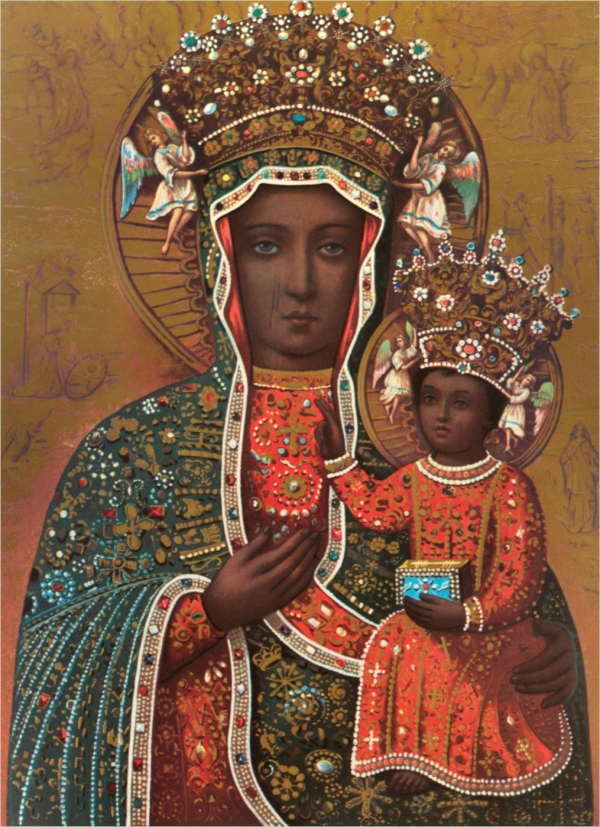One of the most famous relics of Polish identity is the painting of the Black Madonna of Czestochowa [pictured, above]. Poles who migrated to this country and longed for some aspect of their home, some celebration of their identity, set up a chapel in the 1950s up in Doylestown dedicated to the Black Madonna. These days, the shrine is impressively large, in fact it’s one of the largest monuments to the Polish identity around. Last weekend, Doylestown hosted the Polish American Family Festival & Fair celebrating diverse aspects of the Polish identity, from music to food to beer and dancing. While I’m not Polish, I went with a friend of mine just to see what it was like. (It’s happening again this weekend, if you are interested in checking it out.)
There are some standbys of any festival that never fail to appear. The white-top tents selling stuff you aren’t sure you want or need. The food stalls that you’re pretty sure are overpriced, but what choice do you have? The carnival games that appeal to children, and those who still think they’re not rigged. These all made appearances, so what about it signified the Polish cultural aspect? There were stands selling T-Shirts for you to proclaim your heritage, as well as a man-at-arms you could take a selfie with. The beer tents only sold Polish beers — bocks and lagers I’d never heard of, but what I tried was tasty. There was a huge tent that blasted polka all throughout the day. The food was classic: kielbasa, stuffed cabbage, and pierogi, though you could get a hot dog or hamburger if you preferred. A small stage displayed what seemed to be some sort of cultural play, but, because I don’t speak Polish, I couldn’t understand it.
Having looked around the festival and sampled the drinks, we needed to find the bathroom. Not seeing anything on the festival grounds, we realized the only bathrooms available were in the chapel itself. So, after refreshing ourselves there, we took the liberty of exploring inside. We found a room with relics and displays of Polish heritage, including medals from the Second World War, a replica Szopka, plates with fish painted on, and more curious objects besides. We wandered into an art exhibit, some of which was really excellent and some of which was bizarre. Overall, we got the feeling of just how expansive the shrine is, and how much it means to the community involved with its efforts.
My friend was chomping at the bit to go one some rides, so we tested them out. The few designed to entertain adults were actually quite enjoyable, though there were only three. We were whirled, lifted and spun around several times, leaving us laughing as we walked away. As we had done everything else, we got some dinner and then hit the road, listening to Blonde on Blonde to clear our heads of the polka. I can honestly say I had a good time, but it might have been better if I spoke Polish. As it was, we just had to make do. — CHRISTOPHER MALENEY
THE POLISH AMERICAN FAMILY FESTIVAL & FAIR RUNS THRU SEPT. 10TH

